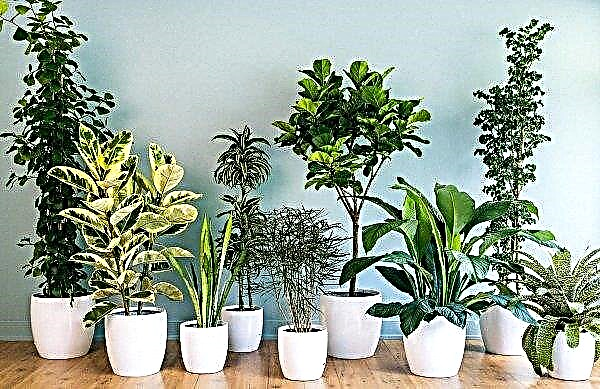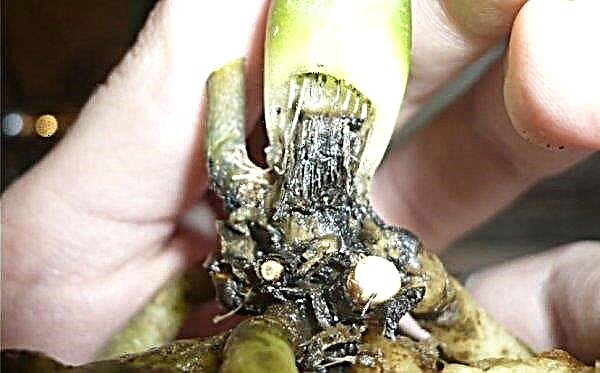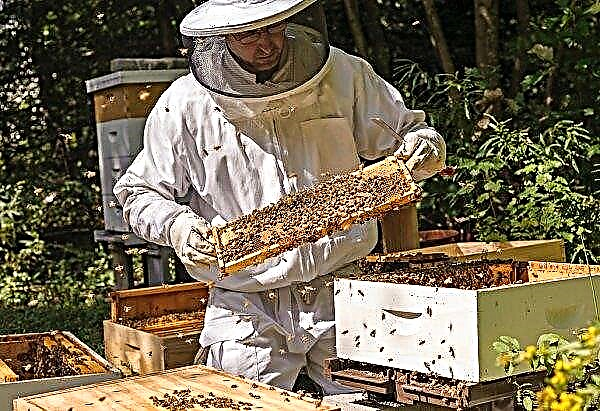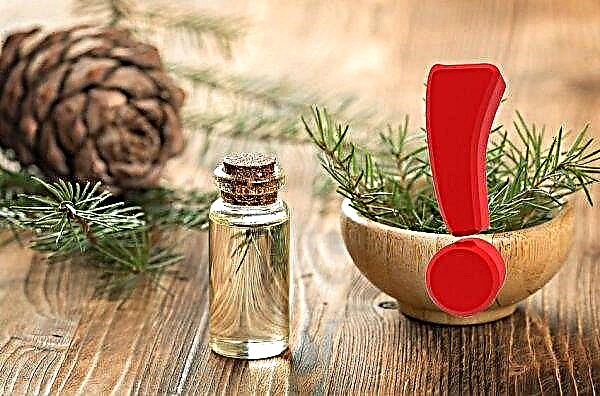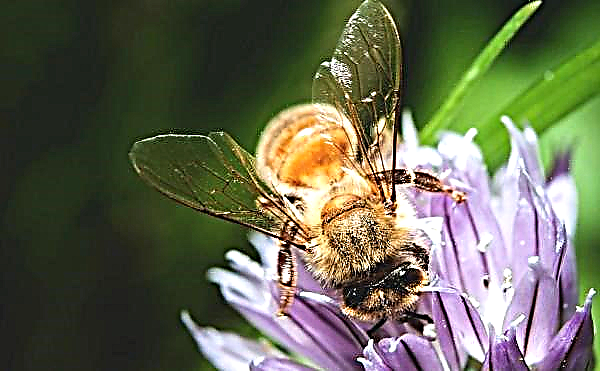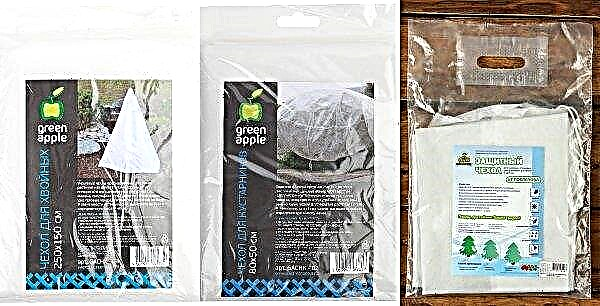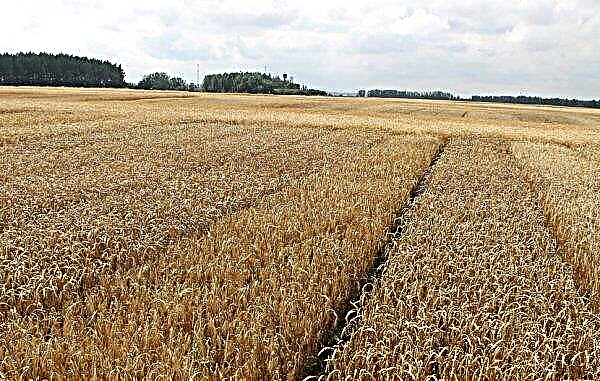Parsnip is a plant that has been known since ancient times. Ancient Native American tribes bred a vegetable, knowing about its useful properties. It is impossible to find out exactly where this vegetable came from and to establish its origin, however, scientists found that the useful properties of the plant were known even in ancient times. It was possible to find out only that the plant originates somewhere in Europe. There, most of the main dishes were prepared from it before the potatoes spread everywhere.
The main characteristics of the parsnip
Parsnip is a vegetable, a two-year-old plant belonging to the Umbrella family, a distant relative of carrots. In the people it is more often called a white root, a clerk, field borsch.
Appearance
This is a vegetable crop reaching 2 meters in height. A straight stalk with long large leaves branches more from above. Its root is very similar to carrots, only the color is white. Parsnip flowers are complex yellow umbrellas (look like dill flowers).
Chemical components
Parsnip root crops contain a large amount of proteins, carbohydrates, fats, dietary fiber, vitamins (E, B2, B1, K, C and folic acid) and minerals. It contains even more useful substances than in parsley. It also contains essential oils, potassium, magnesium, and iron. In addition, its root vegetables contain natural sugars (fructose and sucrose), which are harmless to diabetics and overweight people.
Did you know? Parsnip seeds were found during excavations of villages that existed in the Neolithic era.
A peculiarity of the parsnip is that the substances contained in it have the ability to eliminate spasms of various origins. Furanocoumarins (special substances produced by plants of the Umbrella family) increase the ability of the skin to absorb ultraviolet light, which makes parsnip an excellent product for the manufacture of medicines for vitiligo (a disease in which white spots appear on the skin that do not contain any pigments at all).
Taste qualities
The taste qualities of parsnip are as follows:
- with a faint aroma, reminiscent of parsley;
- spicy, sweetish;
- the taste is a bit like carrots;
- has nutty notes.
Benefit and harm
Due to its diverse composition, parsnip is a very useful vegetable, despite its small popularity.
- Its beneficial qualities for the human body:
- improves heart function. Thanks to potassium, which is in the composition, it lowers blood pressure and dilates blood vessels;
- rich in fiber. Used fiber helps prevent constipation, normalizes the passage of the gastrointestinal tract with food;
- normalizes metabolic processes of the nervous system;
- promotes weight loss. It prevents the production of the hormone of hunger, which significantly reduces a person’s desire to eat too much;
- vitamins and antioxidants included in its composition make parsnip very useful for immunity.
- But despite the benefits, before using it, you should carefully study the possible harm to the human body:
- people with light, delicate and sensitive skin need to be especially careful, since contact of wet skin with the plant can cause severe burns;
- people prone to allergies should use parsnip with caution. Strong substances in its composition tend to cause allergic reactions;
- patients with insufficient body weight should also not eat this vegetable, as it helps to reduce body weight.

Indications and contraindications
Parsnip is an excellent aid in the treatment of many diseases.
- It is used for:
- hormonal problems;
- diseases of the upper and lower respiratory tract (it is also useful in asthma and asthmatic conditions);
- reduced immunity;
- colds;
- digestive system problems;
- diseases of the kidneys and bladder.
Did you know? Parsnip is an excellent remedy for insomnia, any part of the vegetable is suitable for these purposes.
However, the course of some diseases can only be aggravated if you use this plant.
- Parsnip is contraindicated in people who suffer:
- renal failure, since it gives a strong diuretic effect, additionally loading the kidneys;
- dermatitis or intolerance to sunlight, you can get serious burns only from contact with the plant;
- hypotension (low blood pressure), since the vegetable is able to significantly reduce pressure.

The use of parsnip
Parsnip has a fairly large scope. It is used in traditional and traditional medicine, cosmetology, while preparing food, and medicines are made from it.
In cooking
Parsnip is now more used as a spice than as a vegetable. To give a special flavor, its root is added to the first dishes, salads, stewed vegetables. Dried chopped root vegetables are used as seasoning for dishes. You can even find recipes for hopped drinks (beer, kvass) with the addition of this plant.
Also quite often there are recipes for preparing broths, where, in addition to the usual vegetables, this vegetable is indicated. Such a broth becomes denser, more rich. However, the vegetable itself is then not eaten, but thrown away. As an example of the use of vegetables in cooking, you can bring a salad of parsnip with apples.
You will need:
- parsnip - 130 g;
- sweet apples - 150 g;
- mayonnaise - 1 tbsp. l .;
- lemon juice - 1 tsp;
- a sprig of parsley;
- salt to taste.
Cooking:
- Wash and peel the parsnip.
- Wash the apple, grate with a parsnip on a coarse grater.
- Stir, salt, pepper.
- Add lemon juice.
- Add mayonnaise, mix thoroughly.
- Sprinkle with finely chopped parsley before serving.
The salad is original, with an unusual taste and aroma.
Traditional medicine recipes
Parsnip is very popular in folk medicine. For medicinal purposes, use all parts of the plant - leaves, root crops, seeds, even stems. Below are a few recipes for preparing medicines from this vegetable.
Important! Parsnip is categorically contraindicated for people suffering from acute diseases of the gastrointestinal tract, hepatitis, cirrhosis, nephritis and in the presence of any kind of tumors.
With kidney diseases and how a diuretic it is used according to this recipe:
- Two tablespoons of finely chopped leaves pour 2 tbsp. boiling water.
- Insist 1 hour (it is advisable to use a thermos), strain.
- Use 1/3 tbsp. 3 times a day before meals for 2 weeks.
If you suffer from kidney stones or in the bladder, it is recommended to use root crops for the treatment of: 1 tbsp. l chopped root pour 2 tbsp. boiling water, insist for 2 hours in a thermos. Strain and drink 1 tbsp. before eating. Parsnip is especially useful for men's health. A decoction of the root crop helps with prostatitis, and also increases reproductive function and seed production.
Strain and drink 1 tbsp. before eating. Parsnip is especially useful for men's health. A decoction of the root crop helps with prostatitis, and also increases reproductive function and seed production.
To prepare a decoction for potency, you will need:
- 6 tbsp. Sahara;
- 4 tbsp. chopped parsnip root;
- 400 ml of boiling water.
Mix sugar and root, pour boiling water, cook over low heat for 15 minutes. Insist 8 hours. You need to consume such a decoction for a month, 1 tbsp. 4 times a day before meals.
In cosmetology
Because of its composition, parsnip is widely used in cosmetology. It nourishes and whitens the skin, prevents the formation of wrinkles. Most often, vegetable-based preparations are used to treat diffuse (very severe) baldness, which women often suffer from.
To strengthen the follicles, the juice of this plant is rubbed into the hair roots. With inflammatory processes on the skin and the formation of cellulite, it also helps a lot.
At home
In everyday life, parsnip is mainly used in the kitchen, because few people know that it is an excellent honey plant, which gives delicious honey with a light shade that is pleasant to the eye. In addition, it can be used as pet food, it is especially useful for cows - milk becomes much tastier and its quantity increases.
In addition, it can be used as pet food, it is especially useful for cows - milk becomes much tastier and its quantity increases.
Basic rules for growing
The plant is quite unpretentious in cultivation, it is found even in the wild, so you can easily grow it yourself in your garden.
Site selection
When choosing a site for planting crops, one should take into account that it is better to plant it after potatoes, onions, cabbage and should not be planted if carrots, dill, celery were grown on the site before that. The favorable soil for the culture is loam or sandy loam. The soil before planting in the fall is fertilized with compost.
Important! Parsnip seedlings are very sensitive to transplants and various kinds of root damage, therefore it is better to plant it in peat pots, which can then be dug in the garden.
Landing
Parsnip seeds have poor germination, and the plant itself has a long vegetation period (the vegetable simply does not have time to ripen by the time it begins to be harvested), therefore experienced gardeners advise planting the vegetable in the fall with seeds or seedlings in the spring. The best time for planting seeds for seedlings is the beginning of March. Before planting, the seeds are prepared: soaked for a day in warm water. It must be changed periodically so that the seeds do not cool down and are warm all the time. If desired, after soaking, you can treat them with growth stimulants. They are planted to a depth of 3-4 cm. After 18-20 days, you can wait for seedlings. The plant is cold-resistant, but when the first shoots appear, it is better that the seedlings are in the sun. You need to water the seedlings regularly and abundantly, make sure that the top layer of the earth does not dry out.
It must be changed periodically so that the seeds do not cool down and are warm all the time. If desired, after soaking, you can treat them with growth stimulants. They are planted to a depth of 3-4 cm. After 18-20 days, you can wait for seedlings. The plant is cold-resistant, but when the first shoots appear, it is better that the seedlings are in the sun. You need to water the seedlings regularly and abundantly, make sure that the top layer of the earth does not dry out.
In open ground, seedlings can be planted in late April - early May. The distance between rows should be at least 40 cm, and between the plants themselves in a row - 15 cm. If you want to plant a vegetable with seeds, then this can be done either in autumn (late September - early October), or in spring in April. The soil before planting seeds must also be fertilized first, and the seeds themselves should be soaked, as described above. He tolerates winter well in the land, in the spring he can only thin out in the beds.
Watering and pest control
The plant does not like excess moisture, because in the rainy season it is better not to water it at all. If the weather is dry, then the earth is moistened 2-3 times per season. The most dangerous pests of vegetables are striped bristles, caraway moths and field bugs. To protect it from pests, it is necessary first of all to take preventative measures: correctly alternate crops, thin out plants in a timely manner, clean and destroy plant debris in a timely manner, monitor proper soil fertilization. In addition, you need to properly prepare the storage for root crops: thoroughly clean them, dry, ventilate and be sure to whiten.
To protect it from pests, it is necessary first of all to take preventative measures: correctly alternate crops, thin out plants in a timely manner, clean and destroy plant debris in a timely manner, monitor proper soil fertilization. In addition, you need to properly prepare the storage for root crops: thoroughly clean them, dry, ventilate and be sure to whiten.
Harvesting and storage
Vegetables are harvested in late autumn, just before the onset of frost. If the root crops are left in the ground for the winter, then in the fall leaves are cut, and the tops of the soil are topped up to prevent the fruits from freezing. In the spring they dig them up before they start letting out leaves, otherwise the quality of the root will deteriorate greatly. Root crops must be dug up, and not pulled out of the ground.
When autumn harvesting, the leaves are cut off at the root, but so as not to damage it. The roots are left to dry, after which they are stored for storage in freezers or in the cellar (basement), after pouring it with dry, clean sand. Storage temperature should not be higher than + 3 ° C, but not lower than zero. Despite the fact that this vegetable is not very popular, it is useful in many areas of our lives, necessary both for the manufacture of medicines and for the preparation of dishes with a unique taste and aroma, because if you have not tried parsnip, you should at least try it once to appreciate it.
Despite the fact that this vegetable is not very popular, it is useful in many areas of our lives, necessary both for the manufacture of medicines and for the preparation of dishes with a unique taste and aroma, because if you have not tried parsnip, you should at least try it once to appreciate it.

